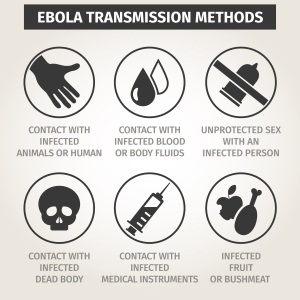
TransmissionĮbola virus is introduced into the human population through contact with blood, organs, or other bodily fluids of an infected animal. The first human EVD case in the West Africa outbreak (2014 to 2016) was likely infected via exposure to bats. Non-human primates are known to have been a source of human infection in a number of previous EVD outbreaks, however, they are considered incidental rather than reservoir hosts as they typically develop severe, fatal illness when infected and viral circulation is not believed to persist within their populations. The natural reservoir for Ebola virus is believed to be fruit bats from the Pteropodidae family. Source: World Health Organization ( WHO). *Note that the number of deaths reported during this outbreak were likely to have been underestimated. 1.3 EVD cases that occurred during the West Africa outbreak 2014 to 2016, caused by Zaire ebolavirus Country Reports from the Philippines ( 19), and the US of humans with antibodies to Reston ebolavirus, but with no EVD symptoms, were not included in this table. Suspected, probable and confirmed EVD cases are included. *Previous name for province/area of outbreak These cases died in the DRC and are recorded in the DRC case count. (c) during this outbreak, 4 imported cases were confirmed in Uganda. (b) not linked to the 2014 to 2016 West Africa outbreak (a) This outbreak occurred in an area that is now part of South Sudan (formerly part of Sudan). North Kivu, Ituri and South Kivu Provinces Outbreak affected Gabon and Republic of the Congo La Zadié, Ivindo and Mpassa Districts, Gabon and Cuvette-Ouest Department, Republic of the Congo
Ebola ways of transmission professional#
Western Equatoria State and Central Equatoria StateĪ medical professional was infected in Gabon and travelled to South Africa.Ī nurse treating the case became infected and died. 1.2 Outbreaks of EVD, up to January 2023 (excluding the West Africa outbreak 2014 to 2016) Year Imported cases of EVD are not included in this figure. 1.1 Map of countries which have reported EVD cases, up to January 2023, including year of reporting and Ebola virus species See information on current EVD outbreaks. It is not yet known if this species is pathogenic to humans. Several animal facility workers developed antibodies, but none reported any symptoms.Ī sixth species of Ebola virus was discovered in bats in Sierra Leone in 2018 and named Bombali ebolavirus. In 2008, RESTV was isolated from sick pigs in the Philippines. Investigations traced the source of the outbreaks to an export facility in the Philippines, but how the facility was contaminated was not determined. Several research workers became infected with the virus during these outbreaks, but did not become ill. RESTV was first detected in 1989 in Reston, Virginia (US), in a colony of monkeys imported from the Philippines, and has subsequently caused outbreaks in non-human primates in Pennsylvania and Texas (US), and Sienna (Italy). Reston ebolavirus ( RESTV) is known to have caused severe illness in non-human primates, but not in humans.

In 2014, an EVD outbreak was reported for the first time in West Africa (Guinea, Liberia and Sierra Leone). Most confirmed cases were reported from the DRC, Gabon, the Republic of the Congo, Sudan and Uganda. Until 2014, outbreaks of EVD were primarily reported from remote villages close to tropical rainforests in Central and West Africa. However, since 1994, outbreaks have been recognised with increasing frequency (see section 1.2 below).

The disease was identified in 1976, in almost simultaneous outbreaks in the Democratic Republic of the Congo ( DRC) and Sudan (now South Sudan).īetween 19, no cases or outbreaks were detected. Ebola virus disease ( EVD) is a severe disease caused by Ebola virus, a member of the filovirus family, which occurs in humans and other primates.


 0 kommentar(er)
0 kommentar(er)
